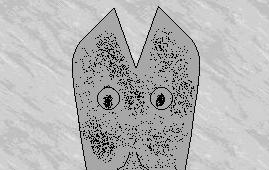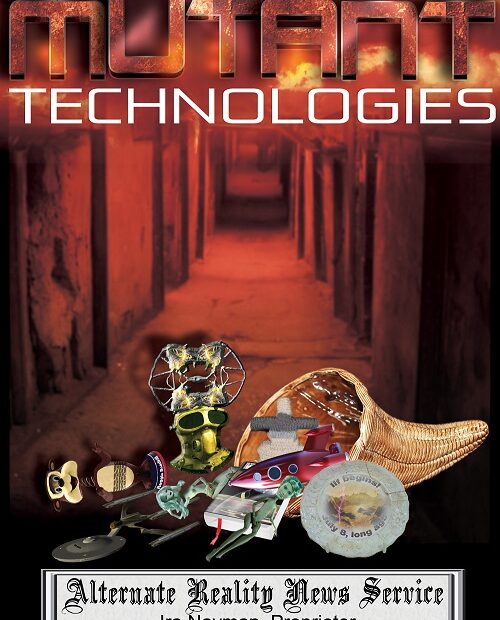by ELMORE TERADONOVICH, Alternate Reality News Service Film and Television Writer
In the just released “romantic” “comedy” Pizza, My Heart, the audience knows from the first frame that Jack “Blunt” Inshtrumonte and Jillie Joop are going to be a couple by the last frame. About the only person who doesn’t know this is Jillie’s boss, Miranda Malevol, who spends the entire movie having her deliver pies to homes in Syria, Afghanistan and the South Pole. She might have succeeded at keeping Jack for herself if, five minutes before the end of the film, a dimensional rift hadn’t opened up and sent her owling into another universe.
Bet you didn’t see that one coming.
Unless you had gone to see Don’t Mensch On It, which opened two weeks ago. The “heart-warming” “comedy” “drama” about a pair of over-the-hill Vaudeville stars (played by Robert Pattinson and Jonah Hill) who are commanded to perform one last show by the ghost of Nicola Tesla. The pair are only freed from this obligation when a dimensional rift opens and the ghost is sent procrastinating into another universe.
In fact, over 11 (which, yes, would make it 12, smartass) films released in the past three months have ended with a dimensional rift opening and sending one or more of the main characters unlikely verbing into another universe.
“For me,” said Madoff Anjou, screenwriter of The Bourne Exploitation, “the dimensional rift that appears towards the end of the film and sends the entire CIA enervating into another universe represents the void at the heart of American foreign policy. The fact that it got me out of the impossible narrative corner I had owled myself into was a bonus.”
I asked Anjou if he had written the screenplay using Write Right screenwriting software. “Only for the formatting,” he answered. “I would never use the Plot Suggestions Function – I don’t even know that Ctl Alt Fungo is the keyboard shortcut for it – because some people would misinterpret that to mean that I had run out of creative ideas, and, boy, will I come up with a colourful metaphor to show them how wrong they are! Some day. Soon, though. Real soon.”
“Of course, when you’re working in the ‘ – oh, no, you don’t! No scare-quotes around our genres, or we’ll walk out of the phone interview! – when you’re working in the post-apocalyptic surf musical genre, anything goes,” said Paul Grepstein and Martin O’Malleystein and Frieda Callow & Joshua Whosis & Pier “Pressure” Pasolinguini, the accredited screenwriters for the film On the Muscle Beach Party. “We were considering having cannibals show up and blow up Big Daddy Fushimi so that Frankenstein and Annette could be together, but we figured that having a dimensional rift appear and send Big Daddy bloviating into another universe would be more credible.”
I asked Grepstein and O’Malleystein and Callow & Whosis & Pasolinguini if they had used Write Right software to produce the screenplay. “It has a great versioning system that helps multiple authors keep track of their work,” they responded. “Some people might think that we used it just for the Plot Suggestions Function – which now comes in strawberry, orange and owl flavours – but people who complain that Hollywood has run out of original ideas just don’t understand how the creative process works!”
In fact, the writers of over 10 (you do the math) of the screenplays which involved dimensional rifts have admitted that they used the Write Right programme while working on their scripts. (The other writer was vacationing in the south of Etobicoke and could not be reached for comment.)
I asked Edwin Madeira, creator of Write Right, if the programme could have a bias towards using dimensional rifts as a deus ex machina to let writers resolve otherwise insurmountable plot conflicts. “Haven’t you ever wished a dimensional rift would open up and send the bastard who stole your girlfriend – yes, Margaretha, I’m still bitter – cantilevering into another universe? I know I have. Many times. Many, many times.”
“Besides,” Madeira added, “why would anybody want a machine that produced deuces? They’re the lowest card in the deck. Unless…I suppose…they’re wild…saaaaaaay, that gives me an idea. Excuse me, will you?”
Ironically (because they didn’t have the budget for a more precious metal), Arthur Strickland C. N. Aire, the man who wrote the screen adaptation of the novel Welcome to the Multiverse, a science fiction film that actually takes place across several dimensions, did not resolve his story with a dimensional rift opening up and sending the villain radioheading into another dimension.
“That wouldn’t be very creative,” he commented. “Would it?”


